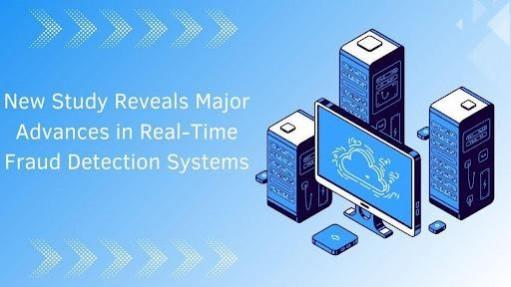
A pioneering research paper by Santoshkumar Anchoori, a financial technology expert from the USA, unveils major advancements in real-time fraud detection that are set to transform banking security. His analysis reveals innovative approaches to safeguarding digital transactions while maximizing system efficiency, offering new solutions for an increasingly digital financial world.
The Rise of Real-Time Defense
The financial industry has undergone a remarkable evolution in fraud detection, transitioning from conventional batch processing to advanced real-time monitoring systems. Today's cutting-edge solutions demonstrate unprecedented capabilities, processing 100,000 transactions every second while maintaining over 90% detection accuracy. This significant advancement directly addresses modern cybersecurity challenges, replacing outdated systems that required up to two days to identify fraudulent activities. The shift represents a crucial upgrade in the industry's defense against sophisticated digital threats, offering immediate protection for financial transactions.
AI-Powered Revolution
Artificial intelligence and machine learning have dramatically transformed fraud detection systems, slashing false positives by 60%. These intelligent systems continuously adapt to new fraud patterns, providing real-time protection against emerging threats. The technology achieves remarkable accuracy, with detection rates exceeding 98% at sub-millisecond speeds, setting new standards in financial security protection.
Edge Computing Breakthrough
The merger of edge computing and 5G technology represents a major leap in fraud detection capabilities. This powerful combination enables AI processing at network edges, revolutionizing mobile payment security. The innovation delivers remarkably fast fraud detection, achieving sub-millisecond response times while maintaining exceptional accuracy above 98%. This advancement marks a significant milestone in protecting mobile financial transactions.
Blockchain Beyond Cryptocurrency
Blockchain technology has evolved far beyond its cryptocurrency origins to become a powerful tool in fraud detection systems. When integrated with real-time analytics platforms, it creates a robust security framework that offers both enhanced protection and complete transaction transparency. The technology's distributed ledger capabilities enable faster verification processes while significantly improving fraud prevention. This innovative combination marks a significant advancement in financial security, offering institutions a more comprehensive approach to protecting digital transactions..
Cloud-Native Architecture Innovation
The shift to cloud-native architectures marks a revolutionary change in fraud detection systems. These new implementations cut deployment time by 65% while strengthening system reliability through redundancy and fault tolerance features. The cloud approach introduces automatic resource management and streamlined communication between services, creating a more robust and efficient security infrastructure that can adapt to changing needs.
Cost-Efficiency Breakthrough
Modern fraud detection systems demonstrate impressive cost savings without compromising performance. By implementing advanced resource allocation algorithms in data clusters, organizations have achieved up to 40% reduction in operational costs while enhancing system capabilities. The key innovation lies in smart algorithms that analyze past usage patterns and real-time demand to optimize resource distribution, creating a more efficient and economical security infrastructure.
Digital Twin Technology Integration
The integration of digital twin technology has revolutionized system monitoring and maintenance. This innovation enables organizations to simulate and predict system behavior under various conditions, significantly reducing unplanned downtime while optimizing resource utilization. The technology transforms traditional reactive maintenance into a proactive process, identifying potential issues before they impact system performance.
Future-Ready Infrastructure
The research highlights emerging trends in fraud detection systems, emphasizing scalability and adaptability. Advanced systems now process millions of transactions per second using specialized data stores and in-memory computing platforms. These technological improvements enable fraud detection systems to efficiently handle growing transaction volumes while staying ahead of evolving security challenges, marking a significant step forward in financial security infrastructure.
In his concluding analysis, Santoshkumar Anchoori emphasizes that as financial institutions continue to face increasingly sophisticated fraud attempts, these technological innovations will play a crucial role in maintaining system effectiveness and operational efficiency. The research provides a comprehensive framework for implementing and optimizing real-time fraud detection systems, setting new standards for the industry.








![Sky is the limit: IndiGo is now tenth largest airline by capacity globally; growth indisputable [details]](https://data1.ibtimes.co.in/en/full/767455/sky-limit-indigo-now-tenth-largest-airline-by-capacity-globally-growth-indisputable-details.jpg?w=220&h=138)








